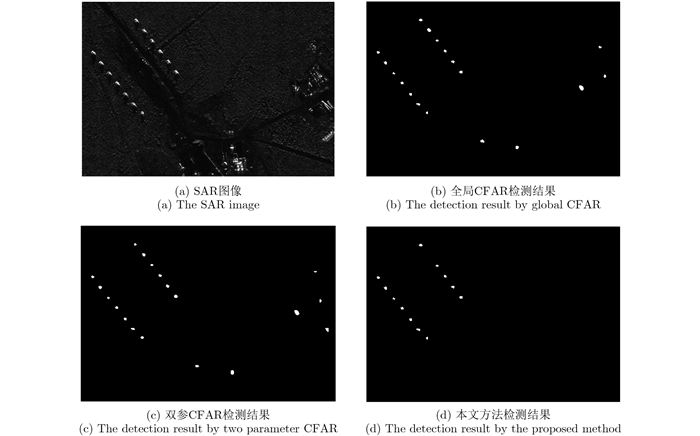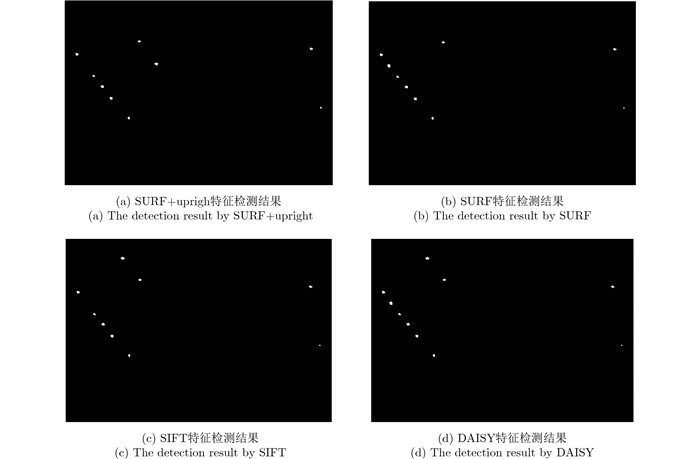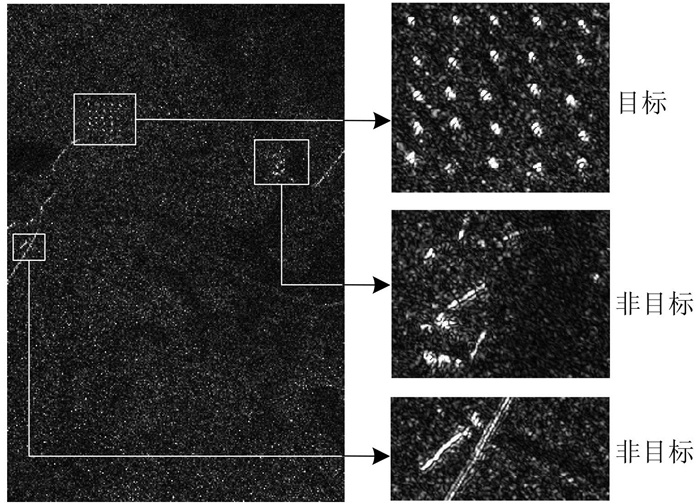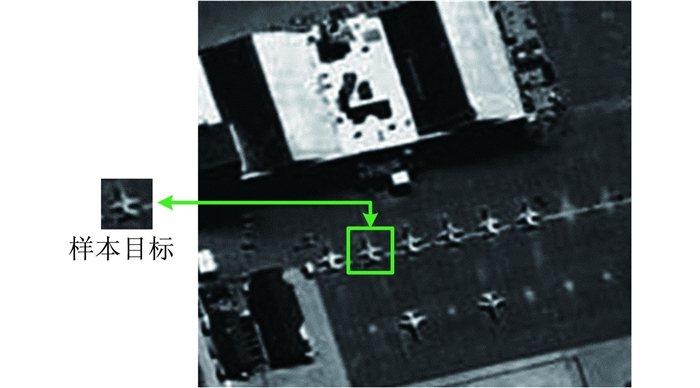- Home
- Articles & Issues
-
Data
- Dataset of Radar Detecting Sea
- SAR Dataset
- SARGroundObjectsTypes
- SARMV3D
- AIRSAT Constellation SAR Land Cover Classification Dataset
- 3DRIED
- UWB-HA4D
- LLS-LFMCWR
- FAIR-CSAR
- MSAR
- SDD-SAR
- FUSAR
- SpaceborneSAR3Dimaging
- Sea-land Segmentation
- SAR Multi-domain Ship Detection Dataset
- SAR-Airport
- Hilly and mountainous farmland time-series SAR and ground quadrat dataset
- SAR images for interference detection and suppression
- HP-SAR Evaluation & Analytical Dataset
- GDHuiYan-ATRNet
- Multi-System Maritime Low Observable Target Dataset
- DatasetinthePaper
- DatasetintheCompetition
- Report
- Course
- About
- Publish
- Editorial Board
- Chinese
| Citation: | Zeng Lina, Zhou Deyun, Li Xiaoyang, Zhang Kun. Novel SAR Target Detection Algorithm Using Free Training[J]. Journal of Radars, 2017, 6(2): 177-185. doi: 10.12000/JR16114 |
Novel SAR Target Detection Algorithm Using Free Training
DOI: 10.12000/JR16114 CSTR: 32380.14.JR16114
-
Abstract
A detection method for Synthetic Aperture Radar (SAR) targets based on single sample feature extraction is proposed. Similar targets in a SAR image are detected according to the effective features of the selected single target sample. First, the potential targets of interest in a SAR image are detected, and the area features and texture features are extracted from the target sample and potential targets, respectively. Then, the false targets are eliminated from the potential targets via different matching methods. The proposed method for texture description in this paper can be adopted for targets with different attitudes by extracting the rotationinvariance features of the local region; these features can deal with speckle noise and deformation. The experimental results show the feasibility and validity of the proposed method. -

-
References
[1] Liu Shuo and Cao Zong-jie. SAR image target detection in complex environments based on improved visual attention algorithm[J]. EURASIP Journal on Wireless Communications and Networking, 2014, 2014(1): 2–8. doi: 10.1186/1687-1499-2014-2[2] Cui S, Dumitru C, and Datcu M. Ratio-detector-based feature extraction for very high resolution SAR image patch indexing[J]. IEEE Transactions on Geoscience and Remote Sensing, 2013, 10(5): 1175–1179. doi: 10.1109/LGRS.2012.2235406[3] Kreithen D, Halversen S, and Owirka G. Discriminating targets from clutter[J]. The Lincoln Laboratory Journal, 1993, 6(1): 25–52.[4] Kaplan L M. Improved SAR target detection via extended fractal features[J]. IEEE Transactions on Aerospace and Electronic Systems, 2001, 37(2): 436–451. doi: 10.1109/7.937460[5] Rohling H. Radar CFAR thresholding in clutter and multiple target situations[J]. IEEE Transactions on Aerospace and Electronic Systems, 1983, 19(4): 608–621.[6] Rickard J T and Dillard G M. Adaptive detection algorithms for multiple target Situations[J]. IEEE Transactions on Aerospace and Electronic Systems, 1977, 13(4): 338–343.[7] Smith M E and Varshney P K. Intelligent CFAR processor based on data variability[J]. IEEE Transactions on Aerospace and Electronic Systems, 2000, 36(3): 837–847. doi: 10.1109/7.869503[8] Farrouki A and Barkat M. Automatic censoring CFAR detector based on ordered data variability for nonhomogeneous environments[J]. IET Proceedings-Radar, Sonar and Navigation, 2005, 152(1): 43–51. doi: 10.1049/ip-rsn:20045006[9] 周德云, 曾丽娜, 张堃.基于多尺度SIFT特征的SAR目标检测[J].西北工业大学学报, 2015, 33(5): 867–873. http://www.cnki.com.cn/Article/CJFDTOTAL-XBGD201505034.htmZhou De-yun, Zeng Li-na, and Zhang Kun. A Novel SAR target detection algorithm via multi-scale SIFT features[J].Journal of Northwestern Polytechnical University, 2015, 33(5): 867–873. http://www.cnki.com.cn/Article/CJFDTOTAL-XBGD201505034.htm[10] Zhang Qiang, Wu Yan, Wang Fan, et al.. Anisotropic-scalespace-based salient-region detection for SAR images[J]. IEEE Geoscience Remote Sensing Letter, 2016, 13(3): 457–461.[11] Bhattacharya J, Sanyal G, and Majumder S. A Robust biometric image texture descripting approach[J]. International Journal of Computer Applications, 2012, 53(3): 30–36. doi: 10.5120/8403-2466[12] 曾丽娜, 周德云, 邢孟道, 等.一种多特征联合的地面SAR目标分层检测方法[J].西安电子科技大学学报 (自然科学版), 2016, 43(2): 89–94. http://www.cnki.com.cn/Article/CJFDTOTAL-XDKD201602017.htmZeng Li-na, Zhou De-yun, Xing Mengdao, et al.. Novel SAR target detection algorithm via multiple features[J]. Journal of Xidian University, 2016, 43(2): 89–94. http://www.cnki.com.cn/Article/CJFDTOTAL-XDKD201602017.htm[13] Liu Shuai-qi, Hu Shao-hai, Xiao Yang, et al.. SAR image edge detection using sparse representation and LS-SVM[J]. Journal of Information & Computational Science, 2014, 11(11): 3941–3947. http://manu35.magtech.com.cn/Jwk_ics/CN/abstract/abstract2476.shtml[14] Uhlmann S and Kiranyaz S. Integrating color features in polarimetric SAR image classification[J]. IEEE Transactions on Geoscience and Remote Sensing, 2014, 52(4): 2197–2216. doi: 10.1109/TGRS.2013.2258675[15] Srinivas U, Monga V, and Raj R G. SAR automatic target recognition using discriminative graphical models[J]. IEEE Transactions on Aerospace and Electronic Systems, 2014, 50(1): 591–606. doi: 10.1109/TAES.2013.120340[16] Lowe D G. Distinctive image features from scale-invariant keypoints[J]. International Journal of Computer Vision, 2004, 60(2): 91–110. doi: 10.1023/B:VISI.0000029664.99615.94[17] Bay H, Ess A, Tuytelaars T, et al.. Speeded-Up Robust Features (SURF)[J]. Computer Vision and Image Understanding, 2008, 110(3): 346–359. doi: 10.1016/j.cviu.2007.09.014[18] Tola E, Lepetit V, and Fua P. DAISY: An efficient dense descriptor applied to wide-baseline stereo[J]. IEEE Transactions on Pattern Analysis & Machine Intelligence, 2009, 32(5): 815–830. -
Proportional views

- Figure 1. The theory of the SAR target detection system
- Figure 2. The SURF descriptor of each keypoint
- Figure 3. The construction of PSURF descriptor
- Figure 4. The transformation of coordinates of the SAR image
- Figure 5. The Haar respondence of the image
- Figure 6. The process of target detection
- Figure 7. The experiment results comparing the proposed method with CFAR detector
- Figure 8. The detection results by different feature descriptors
- Figure 9. The SAR image with armored cars
- Figure 10. The armored car detection results by different descriptors
- Figure 11. The bistatic SAR image with airplanes
- Figure 12. The airplane detection results by different descriptors


 Submit Manuscript
Submit Manuscript Peer Review
Peer Review Editor Work
Editor Work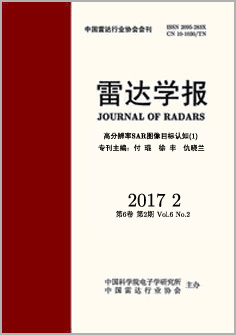





 DownLoad:
DownLoad:





